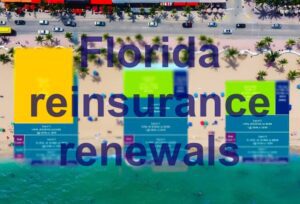TransRe slashes cat book at 1/1 as returns insufficient: Alleghany CEO Brandon

TransRe, the reinsurance underwriting brand of the Alleghany Corporation, slashed its catastrophe exposures at the January 2022 renewals, making a move to reduce exposure after a number of challenging years where cat losses have dented its performance.
In reporting its full-year 2021 results last night, Alleghany revealed that TransRe delivered a small underwriting profit of $29 million and a 99.4% combined ratio for the year.
That was despite incurring $545 million of net catastrophe losses through 2021, which added 10% points to the combined ratio.
In his first letter to Alleghany shareholders, new CEO Joseph P. Brandon explained that, “This was TransRe’s first annual underwriting profit since 2016 due to the unusual frequency of modest-sized catastrophe events, often involving secondary perils such as wildfires, floods, and winter and convective storms, that began in 2017 and has now persisted for five years.”
Following up on a promise made by Alleghany’s former CEO Weston Hicks, who said the firm’s reinsurance company TransRe would reduce its catastrophe exposure if rates did not improve sufficiently, Alleghany’s new CEO Joseph Brandon explained that TransRe took specific action at the 1/1 renewals.
Hicks, the outgoing CEO of Alleghany, called out the industry for underpricing catastrophe risk back in November and said that TransRe would reduce its capacity for catastrophe-exposed property exposures unless the reinsurer was paid properly to put the capital at risk.
While rates increases for global property catastrophe reinsurance were seen to improve at the 1/1 2022 renewals, this hasn’t been sufficient for TransRe to maintain its footprint in that market, it seems.
New Alleghany CEO Brandon explained that, in 2021 TransRe, “Developed a significantly revamped property catastrophe strategy in light of the consistent losses and poor returns on this line over the last five years.”
“Put simply,” he continued “Unless expected returns from catastrophe business improve substantially, which we do not expect, TransRe will reduce the amount of capital it deploys to support this risk.”
The strategy was put into action at the January 2022 renewal season, with a significant pull-back on catastrophe exposed business underwritten.
Brandon said, “During the January 1 renewal season this year, TransRe executed its plan to reduce its catastrophe exposures, while at the same time continuing to grow its casualty and professional lines business.
“At January 1, TransRe reduced its property writings by over 25% and replaced the entire amount with growth in other lines.”
Adding, “It is a testament to TransRe’s franchise and underwriters that it was able to both shrink its cat capacity and grow its casualty and professional books at the same time, with the same clients, through the same brokers. This strategy will continue to unfold as 2022 progresses.”
We understand from sources that TransRe has persisted with its collateralized reinsurance sidecar Pangaea, but that this may have shrunk a little due to the shift in strategy.
That’s actually encouraging for investors in the vehicle, as it shows TransRe has not just shifted catastrophe premiums onto third-party investor capital that it felt were not delivering returns sufficient for its own capital.
We’re told the Pangaea reinsurance sidecar remains a core vehicle for TransRe, allowing it to share in the returns of catastrophe exposed reinsurance business that it does deem to be adequately priced.
Going forwards, the Pangaea sidecar will also provide TransRe with optionality should it find certain areas of catastrophe exposure better-priced, as the vehicle can provide an efficient source of complementary capital to help the company expand back into any areas of property reinsurance it deems more adequately priced in future.
Summing up on TransRe, it seems the new CEO is cognisant of the important role the reinsurer can play for Alleghany.
“Despite $2.5 billion of catastrophe and pandemic-related losses during the past five years, TransRe, remains a dependable, though episodically volatile, compounding machine.
“Accordingly, almost a decade after the acquisition closed, it seems fair to conclude TransRe has worked out well for Alleghany’s stockholders,” Brandon said.







